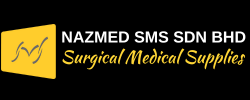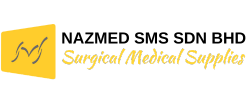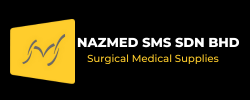NAZMED SMS SDN BHD: Precision Pledged, Innovation Embodied – Crafting a Healthier Tomorrow
Embark on a transformative journey with NAZMED SMS SDN BHD, where precision meets innovation in crafting a healthier tomorrow. Committed to excellence, our pledge resonates in every instrument we produce. From cutting-edge technology to unwavering integrity, we redefine the standards of medical instruments. Trust in us as we embrace sustainability, foster global collaborations, and strive for perfection. Join hands with NAZMED SMS SDN BHD – your gateway to a world where healthcare is synonymous with precision, innovation, and an unwavering commitment to excellence.
Organic and inorganic load present
Type and level of microbial contamination
Concentration of and exposure time to disinfectant/sterilant
Nature of the object
Temperature and relative humidity.
Sterilizing contaminated instruments is an essential component of an effective infection-control program to protect both patients and health care staff. Reusable medical devices, including surgical instruments that enter normally sterile tissue or the vascular system require sterilization before each use. Improperly sterilized or contaminated medical devices utilized in patient care can contribute to surgical-site infection and pose a serious risk to the patient’s safety and welfare and can result in a serious life-threatening infection or even death.
The following recommended practices for Sterilization were developed by the Association of Perioperative Registered Nurses (AORN) Recommended Practices Committee. These recommended practices are intended as guidelines adaptable to various practice settings.
Patient care items should be processed for reuse based on the intended use of the item.
Devices labeled as single use should not be processed unless the FDA guidelines for reprocessing of singleuse devices can be met.
Items to be sterilized should be cleaned, decontaminated, inspected, packaged, sterilized and stored in a controlled environment.
Items to be sterilized should be inspected for cleanliness and proper function.
Items to be sterilized should be packaged in a manner that promotes successful sterilization.
Saturated steam under pressure should be used to sterilize heat-and-moisture stable items unless otherwise indicated by the device manufacturer.
Immediate use sterilization should be kept to a minimum and should be used only in selected clinical situations in a controlled manner.
Ethylene oxide sterilization is a low temperature process that may be used for moisture- and heat-sensitive surgical items and when indicated by the device manufacturer.
Low-temperature hydrogen peroxide gas plasma sterilization methods should be used to sterilize moisture- and heatsensitive items and when indicated by the device manufacturer.
Low temperature hydrogen peroxide vapor sterilization methods should be used for moisture- and heat sensitive items and when indicated by the device manufacturer.
Sterilization systems using ozone should be used for moisture- and heatsensitive items when indicated by the device manufacturer.
Dry-heat sterilization should be used only for materials that are impenetrable to moist heat. Dry heat may be used to sterilize anhydrous (i.e., waterless) items that can withstand high temperatures and when indicated by the device manufacturer.
Liquid chemical sterilant instrument reprocessing systems that use peracetic acid as a low-temperature sterilant should be used for devices that are heat-sensitive, can be immersed, are approved for this process by the device manufacturer, and cannot be sterilized using terminal sterilization methods.
A formalized program between the healthcare organization and healthcare industry representatives should be established for the receipt and use of loaned instrumentation.
Sterilized materials should be labeled and stored in a manner to ensure sterility and marked with the sterilization date.
Transportation of sterile items should be controlled.
Personnel should receive intial and ongoing education and competency validation for sterilization practices.
Documentation should reflect activities related to sterilization.
Policies and procedures for sterilization and sterilization-related processes and practices should be developed, reviewed periodically, revised as necessary and readily available in the practice setting.
A quality assurance and performance improvement processs should be in place to measure patient, process and system outcome indicators.
- Choose an SMS instrument from our website.
- We handle the rest, including adding your company logo.
- Enjoy the benefits of a uniquely branded product.
With lower minimum order requirements, private labeling becomes an affordable option, allowing you to add a personalized touch to instruments.
In conclusion, SMS not only delivers precision in surgical instruments but also opens avenues for customization through our distinguished OEM services. Elevate your brand identity with SMS – where precision meets personalization for a distinctive touch in the world of surgical instruments.




